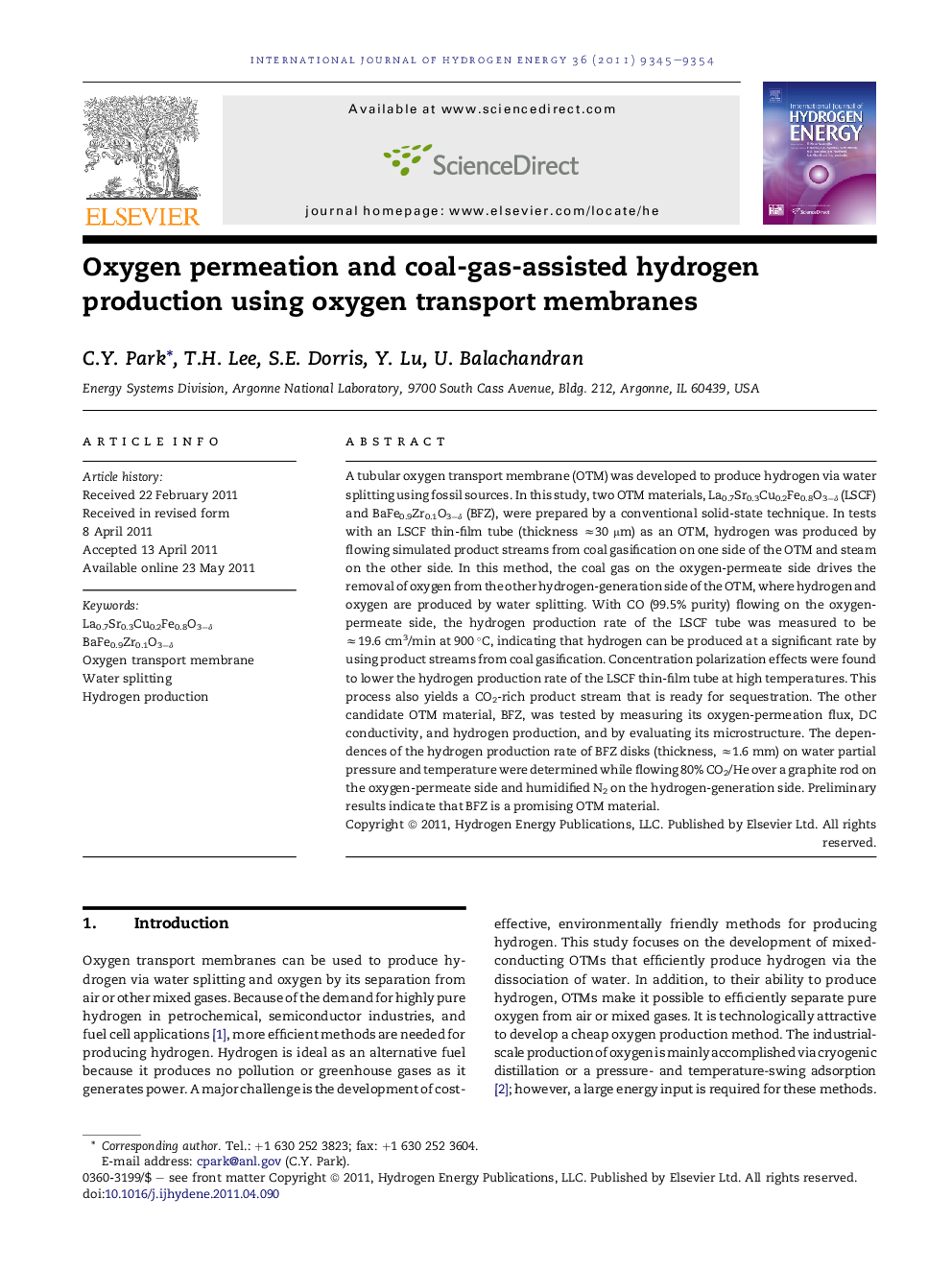| Article ID | Journal | Published Year | Pages | File Type |
|---|---|---|---|---|
| 1282533 | International Journal of Hydrogen Energy | 2011 | 10 Pages |
A tubular oxygen transport membrane (OTM) was developed to produce hydrogen via water splitting using fossil sources. In this study, two OTM materials, La0.7Sr0.3Cu0.2Fe0.8O3−δ (LSCF) and BaFe0.9Zr0.1O3−δ (BFZ), were prepared by a conventional solid-state technique. In tests with an LSCF thin-film tube (thickness ≈30 μm) as an OTM, hydrogen was produced by flowing simulated product streams from coal gasification on one side of the OTM and steam on the other side. In this method, the coal gas on the oxygen-permeate side drives the removal of oxygen from the other hydrogen-generation side of the OTM, where hydrogen and oxygen are produced by water splitting. With CO (99.5% purity) flowing on the oxygen-permeate side, the hydrogen production rate of the LSCF tube was measured to be ≈19.6 cm3/min at 900 °C, indicating that hydrogen can be produced at a significant rate by using product streams from coal gasification. Concentration polarization effects were found to lower the hydrogen production rate of the LSCF thin-film tube at high temperatures. This process also yields a CO2-rich product stream that is ready for sequestration. The other candidate OTM material, BFZ, was tested by measuring its oxygen-permeation flux, DC conductivity, and hydrogen production, and by evaluating its microstructure. The dependences of the hydrogen production rate of BFZ disks (thickness, ≈1.6 mm) on water partial pressure and temperature were determined while flowing 80% CO2/He over a graphite rod on the oxygen-permeate side and humidified N2 on the hydrogen-generation side. Preliminary results indicate that BFZ is a promising OTM material.
► We demonstrate the considerable potential of using renewable energy sources. ► The H2 production rate of a tube was 3–4 times larger than that of a disk. ► The LSCF tube showed good reproducibility and stability in tests of ≈80 h. ► The BFZ was also tested in conductivity and coal-gas-assisted water splitting.
